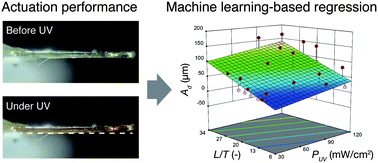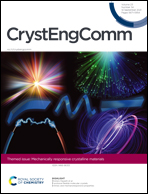Actuation performance of a photo-bending crystal modeled by machine learning-based regression†
Abstract
Photomechanical molecular crystals are a family of mechanically responsive materials that have been recognized as a novel type of actuator. The actuation properties of photomechanical crystals should be characterized. However, deflection and force, which are crucial for actuators, are dependent on experimental conditions such as light intensity and crystal size, and thus the number of combinations under different conditions is infinite. This causes difficulty in obtaining the relationship between the experimental conditions and actuation outputs. To solve this problem, this paper presents a machine learning-based regression approach for modeling the deflection and force of a photo-bending crystal. The deflection and force were experimentally measured for various light intensities and crystal sizes. These time-series data of deflection and force were represented by feature values via exponential fitting for bending and unbending processes. The features of the maximum value and speed of deflection and force were analyzed by polynomial regression and variable selection. Through this process, the most fitted models were constructed for deflection and force and most of them were interpreted by material mechanics. This statistical strategy will potentially be applied to control or optimize other functions of stimuli-responsive crystals.

- This article is part of the themed collections: Data Driven Crystal Engineering, Crystal Engineering Techniques and Mechanically responsive crystalline materials


 Please wait while we load your content...
Please wait while we load your content...